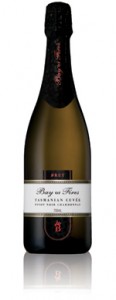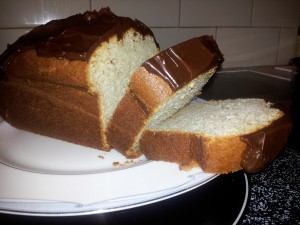A slight hiatus in wine reviews and this week not a still Chardonnay. I actually did have one lined up for you but unfortunately a bit of early winter flu very much got in the way of constructive wine tasting. No point in bringing you a tasting note that reads “I felt sick, the bottle of wine sat open in the fridge for three days, it tasted OK”.
So this week I bring you a sparkling wine from Tasmania and at just under 44% Chardonnay it almost fits the Chardonnay brief. This non vintage wine from Bay of Fires is a blend of the three traditional Champagne grapes: Pinot Noir (48.5%), Chardonnay (43.9%) and Pinot Meunier (6%). The wine is made by Fran Austin and Ed Carr (Ed Carr of Arras fame) with grapes coming from some of Tasmania’s best growing areas. This is a good pedigree to start with!
The wine is pale gold with plenty of fine bubbles* in the glass. The nose is quite pronounced with yeasty, bready characters, a touch of citrus and also strawberries and cream. On the palate there is good acidity and the citrus is more pronounced than on the nose – it’s definitely lemon. There are also bread and dairy characters. The back label suggests yoghurt and if you think of a natural, unflavoured and unsweetened yoghurt, this is a pretty accurate description. The wine has good length and the palate finishes with some suggestion of savoury characters.
I really liked this wine and while its RRP is $31.50 you can pick it up for under $30 if you do some research. I haven’t had my favourite sub $30 sparkling wine for a while so I’m not sure if this knocks it off its pedestal or not (yes, that does sound like an excuse to go out and buy more sparkling, doesn’t it?). Definitely a good wine and reasonable value for money.
* The important thing with bubbly is not the size of the bubbles per se but how long they hang around. The smaller the bubbles (the ‘bead’ in winespeak) in theory the longer they’ll take to dissipate.



